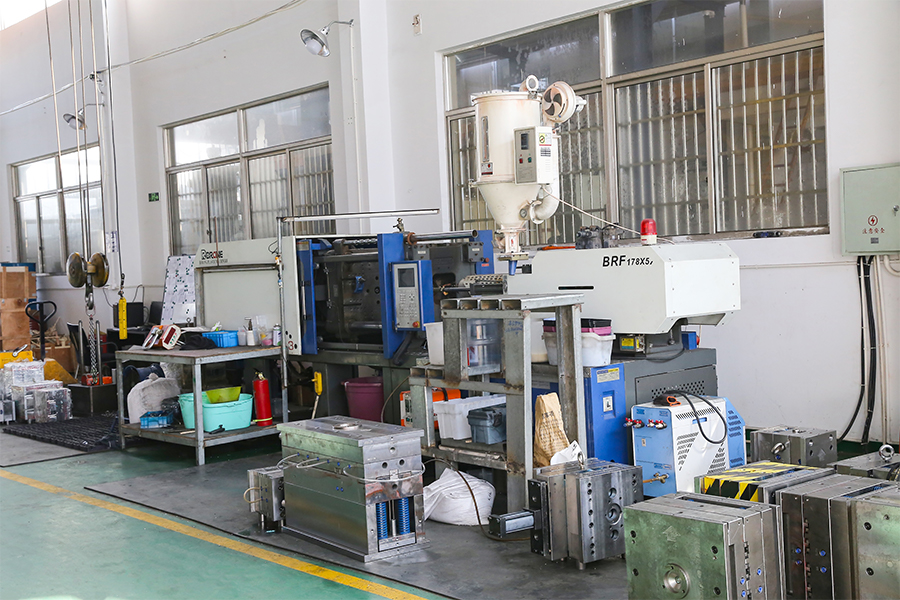We are committed to providing customers with high-quality, precision mold solutions.
Toolbox Molds
Cat:Toolbox And Accessories Mold
Toolbox molds encompass a variety of types designed to produce different styles and sizes of toolbox...
See Details
1. Classification by Product Type
(1) Kitchenware molds

Kitchenware molds are used to produce items such as plastic bowls, cups, food containers, and cutting boards. These molds must ensure smooth surfaces and consistent thickness to make the products safe and durable for food use. For example, a factory producing reusable plastic lunch boxes in Guangzhou relies on precision molds to maintain uniform shapes and proper fitting lids, which are crucial for storage efficiency.
(2) Personal care and hygiene molds
Molds in this category include those for toothbrushes, combs, soap dishes, and cosmetic containers. The mold design must consider ergonomic features and surface texture to make the final products comfortable and practical. A manufacturer of travel-sized toiletry containers in Shanghai uses detailed molds to ensure caps fit securely, preventing leaks during transportation.
(3) Household utility molds
These molds produce cleaning and storage items such as plastic buckets, basins, dustpans, and hangers. Durability and volume capacity are key factors in mold design. In a household goods factory, molds are engineered to handle thicker walls for buckets and basins, ensuring that products can carry water or heavy objects without deformation.
(4) Miscellaneous daily-use molds
Other daily necessities, such as stationery holders, plastic trays, and small organizers, also rely on specialized molds. The molds must accommodate intricate details like compartments or grooves. For example, a stationery supplier uses molds to create pencil organizers with precise slots for different pen sizes, enhancing usability.
2. Classification by Mold Material
(1) Steel molds
Steel molds are the common due to their strength and resistance to wear. They are suitable for high-volume production where durability is essential. A factory producing plastic kitchen utensils uses hardened steel molds to withstand repeated high-temperature injection cycles without deformation.
(2) Aluminum molds
Aluminum molds are lighter and easier to machine, making them suitable for prototype production or low-volume batches. A small startup producing custom plastic containers often uses aluminum molds because they allow for quicker changes in design and reduce initial investment costs.
(3) Hybrid molds
Hybrid molds combine steel and aluminum components to balance durability and cost. For example, a manufacturer producing both bulk and custom plastic organizers may use hybrid molds, where critical high-wear areas are steel and less-stressed sections are aluminum. This approach allows long-term use while maintaining cost-effectiveness.
3. Classification by Production Method
(1) Injection molding
Injection molding is the common method for plastic daily necessities. Molten plastic is injected into the mold under high pressure to form precise shapes. A real-life example is the production of plastic toothbrush handles, where injection molding ensures uniformity and ergonomic design across thousands of units.
(2) Blow molding
Blow molding is used for hollow items such as plastic bottles or containers. The mold forms a cavity, and air pressure shapes the plastic into the desired hollow form. A beverage company in Shenzhen uses blow molding to manufacture water bottles, allowing consistent wall thickness and secure caps.
(3) Compression molding
Compression molding involves placing a preheated plastic material into a mold cavity and applying pressure to shape it. This method is often used for rigid items like storage boxes or trays. For example, a factory producing plastic drawer organizers uses compression molding to create products with sturdy walls that retain shape under weight.
(4) Rotational molding
Rotational molding produces large, hollow items such as basins, storage tanks, or playground equipment. The mold rotates while plastic powder coats the interior, forming an even layer. In practice, a supplier of plastic basins uses rotational molding to create uniform, durable products suitable for household use.
4. Maintenance and Quality Considerations
(1) Mold cleaning and lubrication
Regular cleaning prevents residue buildup and ensures smooth product surfaces. Lubrication reduces wear during repeated production cycles. For example, a factory producing plastic cups cleans molds daily to prevent residue from affecting transparency and finish.
(2) Temperature and pressure control
Maintaining proper temperature and pressure during molding prevents defects such as warping, bubbles, or incomplete fills. A food container manufacturer monitors mold temperature carefully to produce airtight lids that fit precisely.
(3) Inspection and replacement
Frequent inspection identifies cracks, wear, or deformation in molds, which could compromise product quality. Replacement or repair schedules ensure consistent output. A toothbrush factory checks molds weekly to maintain ergonomic handle shapes and avoid production delays.
Contact Us